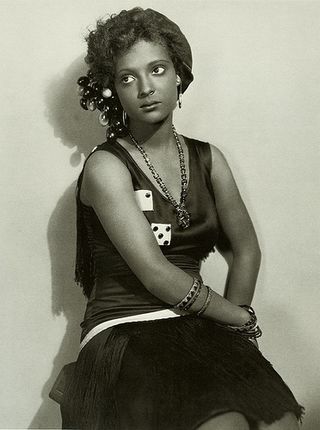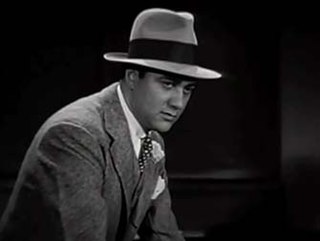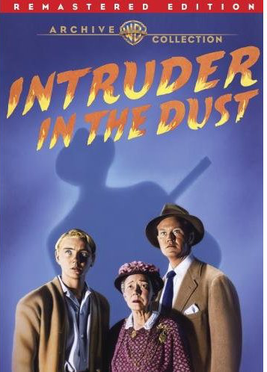Related Research Articles

Dorothy Jean Dandridge was an American actress and singer. She was the first African-American film star to be nominated for the Academy Award for Best Actress, which was for her performance in Carmen Jones (1954). Dandridge had also performed as a vocalist in venues such as the Cotton Club and the Apollo Theater. During her early career, she performed as a part of the Wonder Children, later the Dandridge Sisters, and appeared in a succession of films, usually in uncredited roles.

A mammy is a U.S. historical stereotype depicting black women, usually enslaved, who did domestic work, including nursing children. The fictionalized mammy character is often visualized as a dark-skinned woman with a motherly personality. The origin of the mammy figure stereotype is rooted in the history of slavery in the United States, as slave women were often tasked with domestic and childcare work in American slave-holding households. The mammy caricature was used to create a narrative of black women being happy within slavery or within a role of servitude. The mammy stereotype associates black women with domestic roles and it has been argued that it, combined with segregation and discrimination, limited job opportunities for black women during the Jim Crow era, approximately 1877 to 1966.
Beulah is an American sitcom that ran on CBS Radio from 1945 to 1954, and on ABC Television from 1950 to 1953. The show is notable for being the first sitcom to star an African-American actress, for being ABC TV's first hit situation comedy, and the first hit TV sitcom without a laugh track. The show was controversial for its caricatures of African Americans.

Lillian Randolph was an American actress and singer, a veteran of radio, film, and television. She worked in entertainment from the 1930s until shortly before her death. She appeared in hundreds of radio shows, motion pictures, short subjects, and television shows.

Rex Ingram was an American stage, film, and television actor.
Black Buck also known as Big Black Buck was a racial slur used to describe a certain type of African American man in the post-Reconstruction United States. In particular, the caricature was used to describe black men who absolutely refused to bend to the law of white authority and were seen as irredeemably violent, rude, and lecherous.

I'm Gonna Git You Sucka is a 1988 American blaxploitation parody film written, directed by and starring Keenen Ivory Wayans in his directorial debut. Featured in the film are several noteworthy African-American actors who were part of the genre of blaxploitation: Jim Brown, Bernie Casey, Antonio Fargas and Isaac Hayes. It co-stars John Vernon, Kadeem Hardison, Ja'net Dubois, John Witherspoon, Damon Wayans, Clarence Williams III and Chris Rock, and acts as the film debuts of comedian Robin Harris and brothers Shawn and Marlon Wayans.

Juano G. Hernández was a Puerto Rican stage and film actor who was a pioneer in the African American film industry. He made his silent picture debut in The Life of General Villa, and talking picture debut in an Oscar Micheaux film, The Girl from Chicago, which was directed at black audiences. Hernández also performed in a series of dramatic roles in mainstream Hollywood movies. His participation in the film Intruder in the Dust (1949) earned him a Golden Globe Award nomination for "New Star of the Year." Later in life he returned to Puerto Rico, where he intended to make a film based on the life of Sixto Escobar.

Nina Mae McKinney was an American actress who worked internationally during the 1930s and in the postwar period in theatre, film and television, after beginning her career on Broadway and in Hollywood. Dubbed "The Black Garbo" in Europe because of her striking beauty, McKinney was both one of the first African-American film stars in the United States and one of the first African-Americans to appear on British television.

Madame Sul-Te-Wan was the first African-American actress to sign a film contract and be a featured performer. She was an American stage, film and television actress for over 50 years. The daughter of former slaves, she began her career in entertainment touring the East Coast with various theatrical companies and moved to California to become a member of the fledgling film community. She became known as a character actress, appeared in high-profile films such as The Birth of a Nation (1915) and Intolerance (1916), and easily navigated the transition to the sound films.

Vivian Alferetta Dandridge was an American singer, actress and dancer. Dandridge is best known for being the older sister of actress and singer Dorothy Dandridge and the daughter of actress Ruby Dandridge. Dandridge was a member of the Dandridge Sisters musical group, along with Etta Jones and Dorothy Dandridge from 1934 until the group disbanded in 1940. Dandridge went on to appear in minor roles on films and television from 1940 through the early 1960s. She never really achieved the same notable success as her younger sister, and Vivian Dandridge disappeared from the public eye by 1970. Dandridge died after suffering a stroke on October 26, 1991, at age 70.

Edge of the City is a 1957 American film-noir drama film directed by Martin Ritt in his directorial debut, and starring John Cassavetes and Sidney Poitier. Robert Alan Aurthur's screenplay was expanded from his original script, staged as the final episode of Philco Television Playhouse, A Man Is Ten Feet Tall (1955), also featuring Poitier.

Ralph Cooper, was an American actor, screenwriter, dancer and choreographer. Cooper is best known as the original master of ceremonies and founder of amateur night at the Apollo Theater in Harlem, New York City, in 1935. He wrote, produced, directed and acted in ten motion pictures. Titles include The Duke Is Tops, Dark Manhattan, Gangsters on the Loose and Gang War. Because of his debonair good looks, he was known as "dark Gable" in the 1930s.

Intruder in the Dust is a 1949 crime drama film produced and directed by Clarence Brown and starring David Brian, Claude Jarman Jr. and Juano Hernandez. The film is based on the 1948 novel Intruder in the Dust by William Faulkner, and was filmed in Faulkner's hometown of Oxford, Mississippi.
Deceit is a 1923 American silent black-and-white film. It is a conventional melodrama directed by Oscar Micheaux. Like many of Micheaux's films, Deceit casts clerics in a negative light. Although the film was shot in 1921, it was not released until 1923. It is not known whether the film currently survives, which suggests that it is a lost film.

Phil Moore was an American jazz pianist, arranger, and bandleader.

Drop Squad is a 1994 American drama film directed by David C. Johnson and executive produced by Spike Lee via his production company 40 Acres and a Mule Filmworks. The plot depicts a team of African Americans who kidnap fellow black people who they feel have betrayed their community and seek to "deprogram" them so that they will change their ways. The acronym DROP stands for "Deprogramming and Restoration of Pride". The film has been described as "[p]art thriller, part social satire".
Ben Carter was an American actor and casting agent. He appeared in numerous Hollywood feature films including The Harvey Girls, Dixie Jamboree, Crash Dive, and Born to Sing.
Sonya Wilde is an American former actress, best known for her starring role in the 1960 film I Passed for White. She started her career as Maria on Broadway with the original cast of West Side Story.
Music Hath Harms is an American film released in 1929. A two-reel short it was produced by Al Christie. The film stars Spencer Williams and Roberta Hyson with musical performances by Curtis Mosby and the Blues Blowers. It was part of the Florian Slappey series. The story features a con man promising to wow an audience with a musical performance. The film remains in existence and is available online.
References
- 1 2 3 Lisbon, James (Fall 2005). "Donald Bogle: African American Cinema Historian" (PDF). Awareness Magazine. Archived from the original (PDF) on May 6, 2006. Retrieved September 13, 2017.
- 1 2 Spears, Arthur K. (1999). "Race and Ideology: An Introduction". In Spears, Arthur K. (ed.). Race and Ideology: Language, Symbolism, and Popular Culture. Detroit: Wayne State University Press. pp. 47–48. ISBN 0-8143-2454-1.
- ↑ "Previous Winners of the Theatre Library Association Award". Theatre Library Association. Archived from the original on September 15, 2008. Retrieved April 10, 2009.
- 1 2 Brennan, Carol. "Donald Bogle". Answers.com . Retrieved April 10, 2009.
- ↑ O'Connor, John J. (February 7, 1986). "TV Weekend: Black History on PBS". The New York Times . Retrieved April 10, 2009.
- ↑ Rule, Sheila (March 16, 1993). "Black Film Portrait Back on Screen". The New York Times. Retrieved April 10, 2009.
- 1 2 Maslin, Janet (June 19, 1997). "Hollywood's Tryst With Dorothy Dandridge Inspires Real Love at Last". The New York Times. Retrieved April 10, 2009.
- ↑ "Halle Berry Brings the Passion and Pain of Dorothy Dandridge to HBO Movie". Jet . Johnson Publishing Company. August 23, 1999. Retrieved July 29, 2014.
- ↑ Tucker, Ken (February 28, 2001). "Color Blind". Entertainment Weekly . Archived from the original on April 21, 2009. Retrieved April 10, 2009.
- ↑ Washington, Laurence. "Bright Boulevards, Bold Dreams: The Story of Black Hollywood". Blackflix.com. Retrieved April 10, 2009.